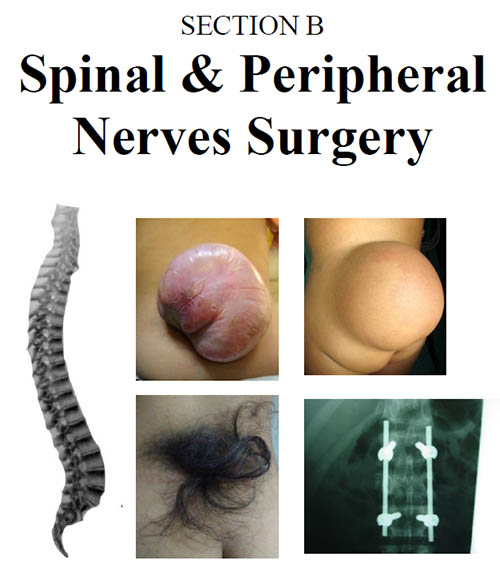Surgical Outcome of Open Carpal Tunnel Release Using Global Symptom Severity Score
DOI:
https://doi.org/10.36552/pjns.v24i3.472Keywords:
Global Symptom Severity score, Carpal tunnel syndrome, Carpal tunnel release.Abstract
Objective: Purpose of conducting this study was to evaluate the surgical outcome of open carpal tunnel release using Global Symptom Severity score (GSS) in our local setting.
Material and Methods: This prospective analytical study was conducted in the Neurosurgery Department Hayatabad Medical Complex, Peshawar. We operated consecutive 105 Carpal tunnel syndrome cases over a period of 2 years via open carpal tunnel release (OCTR) method. All of these cases were surgically indicated. All patients were evaluated preoperatively with clinical assessment and NCS. Cases were operated under local anesthesia as a day case surgery. Patients were evaluated at 3 months follow-up visit using global symptom severity score (GSS) and compared with pre operative GSS. The paired sample test was applied to obtain p value.
Results: Total 105 patients were operated during study period. 72 (69%) patients were women and 33 (31%) were men. The mean age of patients was 41 years. 70 (66.66%) procedures were done for the right hand and 35 (33.33%) were performed for left hand. Pre-op Mean GSS score was 27 ± 2.5 which decreased to 2.1 ± 0.43 postoperatively (P < 0.005).
Conclusion: Carpal tunnel syndrome is more commonly affecting the dominant hand of middle aged females. Open carpal tunnel release procedure is the safe and effective treatment for this compressive neuropathy.
References
2. Fowler JR, Munsch M, Huang Y, Hagberg WC, Imbriglia JE. Preoperative electrodiagnostic testing predicts time to resolution of symptoms after carpal tunnel release. J Hand Surg Eur. 2016; 41 (2): 137-42.
3. Bland JDP. Carpal tunnel syndrome. Clinical review. BMJ. 2007; 335: 343–6.
4. Atroshi I, Gummesson C, Johnsson R, et al. Prevalence of carpal tunnel syndrome in a general population. JAMA. 1999; 282: 153–8.
5. Lam N, Thurston A. Association of obesity, gender, age and occupation with carpal tunnel syndrome. Aust N Z J Surg. 1998; 68: 190–3.
6. Wildin C, Dias J, Heras-Palou C, et al. Trends in elective hand surgery referrals from primary care. The Royal College of Surgeons of England. 2006; 88 (6): 543–46.
7. Practice parameter for carpal tunnel syndrome (summary statement). Report of the Quality Standards Subcommittee of the American Academy of Neurology. Neurology. 1993; 43: 2406–9.
8. Marshall S, Tardif G, Ashworth N. Local corticosteroid injection for carpal tunnel syndrome. Cochrane Database Syst Rev. 2007; (2): CD001554.
9. Taleisnik J. The palmer cutaneous branch of the median nerve and the approach to the carpal tunnel. An anatomical study. J. Bone Joint Surg. 1973; 55A: 1212–17.
10. Chow JCY. The Chow technique of endoscopic release of the carpal ligament for carpal tunnel syndrome. Four years of clinical results. Arthroscopy, 1993; 9: 301–14.
11. Thoma A, Veltri K, Haines T. A meta-analysis of randomised controlled trials comparing endoscopic and open carpal tunnel decompression. Plast Reconstructr Surg. 2004; 114: 1137–1146.
12. Concannon MJ, Brownfield ML, Puckett CL. The incidence of recurrence after endoscopic carpal tunnel release. Plast Reconstr Surg. 2000; 105: 1662–5.
13. Botte MJ, von Schroeder HP, Abrams RA, Gellman H. Recurrent carpal tunnel syndrome. Hand Clin. 1996; 12: 731–43.
14. Phalen GS. The carpal tunnel syndrome: Clinical evaluation of 598 hands. Clin Orthop. 1972; 8: 29-40.
15. Kuschner SH, Ebramzadeh E, Ohnson D, Brien WW, Sherman R. Tinel’s sign and Phalen’s test in carpal tunnel syndrome. Orthopaedics. 1992; 15: 1297-302.
16. Turner A, Kimble F, Gulyas K, Ball J. Can the outcome of open carpal tunnel release be predicted? A review of the literature. ANZ J Surg. 2010; 80: 50-4.
17. Isik HS, Bostanci U. Experience of Carpal Tunnel Syndromethat operated using a limited uni skin incision. Turk Neurosurg. 2011; 21: 177?80.

Downloads
Published
Issue
Section
License
The work published by PJNS is licensed under a Creative Commons Attribution-NonCommercial 4.0 International (CC BY-NC 4.0). Copyrights on any open access article published by Pakistan Journal of Neurological Surgery are retained by the author(s).












